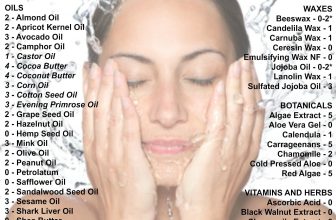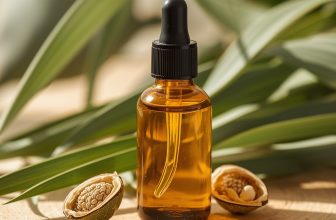
Learn how to choose skin care products for combination skin. Explore tips, key ingredients, and expert advice for a balanced, radiant complexion.
how to choose skin care products for combination skin
Choosing the correct skincare products might feel like a balancing act—especially if you have mixed skin. Your T-zone is oily for one minute; then, your cheeks are tight and dry. Not too far from here. One of the most often occurring skin kinds is combination skin, which has specific difficulties but can be kept in good, shining condition with the correct treatments.
This book will bring you through all you need to know about mixed skin and skincare product selection. We have covered everything from knowing your skin type to identifying the correct chemicals.
What is combination skin?

how to choose skin care products for combination skin
Combining many skin types on various parts of your face is exactly what combination skin sounds like. Usually, the T-zone (forehead, nose, and chin), some areas—typically the T-zone—usually lean dry or normal, while other areas, like the cheeks or jawline, tend to be oily.
Typical Features of Combining Skin
• Oily areas: T-zone’s increasing apparent pores or shine.
• Dry or normal areas: Face skin that is either smoother or tight, flaky.
• Breakouts: mainly in the greasy areas, blackheads or pimples
• Uneven texture: On the face, combine smoothness with roughness.
What Causes Combination Skin?
• There is much influence from genetics. You might also have a mixture of skin if one of your parents does.
• Hormonal fluctuations might cause the dry parts to become less hydrated and the oily areas more active.
• The dryness and the oiliness can be aggravated by outside elements such as skincare routines, nutrition, and weather.
Combining skin usually calls for customized treatment to address dryness and oiliness simultaneously.
Important Considerations Regarding Skincare Product Selection

How to Choose Skincare Products for Combination Skin
Combining skin calls for knowledge of labels and substances while choosing skincare products. Here is what to give top attention:
1. Compatibility of Skin Types
Always search for items marked as especially fit for “combination skin.” Usually designed to moisturize dry areas and reduce sebum output in oily ones, these goods
2. Ingredients to Look For
Correct components can do miracles. These are a few to include in your skincare toolkit:
• Hyaluronic Acid
This hero component’s hydrating qualities are well-known. It keeps dry places moist without imparting greasiness to oily zones.
• Niacinamide:
A flexible component, niacinamide balances skin tone, reduces irritation and controls oil output. It balances mixed skin perfectly.
• Acid salicylic
Salicylic acid gently exfoliates pores to clear them, controlling extra oil without aggravating dry areas.
• Glycerin
Glycerin is a strong yet gentle humectant that works excellent for both oily and dry skin since it pulls moisture into it.
3. Ingredients to Avoid
Not every skincare product contains your BFF. Some can aggravate the dual nature of mixed skin or irritate it.
- Strong alcohols, such as ethanol or denatured alcohol, can severely dry out areas of your face even as they eliminate extra oil from others, therefore upsetting the barrier of your skin.
- Comedogenic components—such as coconut oil or heavy waxes—can block pores, especially in the oily T-zone area, which causes outbreaks.
- Products with too strong fragrances: Artificial smells could aggravate delicate skin and cause redness or breakouts.
4. pH Equity
Maintaining the protective barrier of your skin depends on its natural pH being about 4.7 to 5.75. Products marked as “pH balanced” should help avoid dryness and discomfort.
5. Texture and Recipe
Lightweight but moisturizing treatments mainly help combination skin. For example, gel-based moisturizers hydrate without making one feel oily or heavy.
Tips for Choosing the Right Skincare Products for Combination Skin
Having discussed the foundations already, here are some practical ideas to improve your practice even more:
1. Search for multifarious valuable products.
Products meant for mixed skin frequently double-function. For instance, a moisturizer marked as “hydrating” and “non-comedogenic” is excellent starting point. Multi-taskers save time and help to lower your risk of overloading your skin with too many products.
2. Patch Test Novel Products
Patch test a product on a limited area—such as your jawline—to see for side effects before putting it all over your face. First of all, testing is usually a smart habit, as combination skin can sometimes be erratic.
3. Change with the Seasons.
Your skincare regimen may have to change with the season. As an example:
• Winter: Fight dryness with heavier creams or serums.
• Summer: Change to lightweight, gel-based formulations controlling oil output.
4. Focus on Targeted Treatments
Use focused treatments for particular regions rather than hoping one solution would solve all. In the T-zone, for instance,
- use a matting primer or clay mask.
- Give the drier sections of your face additional hydration—akin to that of a nourishing cream.
5. Review Studies and Expert Views
Read reviews from others with comparable skin issues before pledging to a product. Often, a safe and efficient option is dermatologist-recommended products.
Typical Mistakes to Avoid
Skincare errors can ruin your regimen even with the most excellent intentions. These are a few things to steer clear of in handling mixed skin:
• Using Products Made for Only One Skin Type: Steer clear of dry or oily skin products only. Instead, look for harmony.
• Simplify your regimen to avoid overloading your skin—which can irritate it—by using too many products.
• Skipping Hydration for Fear of Oiliness: Hydration is vital even for oily skin. Maintaining equilibrium requires low-weight moisturizers.
• Neglecting Sunscreen: Although greasy sunscreens are a widespread issue, there are several mattifying, oil-free solutions meant especially for combination skin.
FAQ’s About Skincare for Combining Skin
Can I Use the Same Products Over My Whole Face?
You can indeed! Many solutions are designed to combine skin balance oil in specific places without overdrying other parts. If some areas of your skin have unique demands, nevertheless, feel free to use several products.
How can I control oil without drying my skin?
To keep your routine hydrated enough to guard your skin barrier, use mild oil-controlling products like niacinamide or salicylic acid in your T-zone.
Are Natural Products Better for Combination Skin?
Not precisely. Though they usually lack potent ingredients, natural products are not necessarily better for mixed skin. Examine their ingredient list to be sure they meet your particular demand.
Review and Conjectural Notes
Selecting the best skincare products for mixed skin need not be difficult. The secret is knowing the particular demands of your skin and selecting products with a dual nature in mind. Keep in mind these ideas:
- Steer clear of strong alcohols and heavy, pore-clogging oils;
- Choose products labelled “for combination skin; check for hydrating, non-comedogenic ingredients;
- change your routine seasonally and keep it simple.”
- Before really committing to a new product, remember to read reviews and patch tests.
Combining skin is all about balance, and with the correct products, you can get a brilliant, healthy complexion that feels fantastic in all the correct places.
Have you found ideas or products that transform your mixed skin? Comment with your experience; we would be pleased to hear from you!






